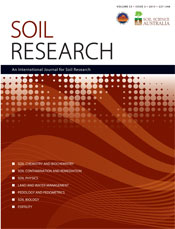SR12049Response of soil nitrous oxide flux to nitrogen fertiliser application and legume rotation in a semi-arid climate, identified by smoothing spline models
Soil N2O emissions from a wheat crop grown in a semi-arid region were studied under different management practices: in 2007 with and without the application of N-fertiliser and supplementary irrigation. In 2008 N was sourced from either a pulse or pasture legume sown the previous season or from N fertiliser applied that season. Our findings confirm that the proportion of N-fertiliser emitted as N2O from rain-fed wheat crops grown in semi-arid regions is less than the international average of 1.0%.




